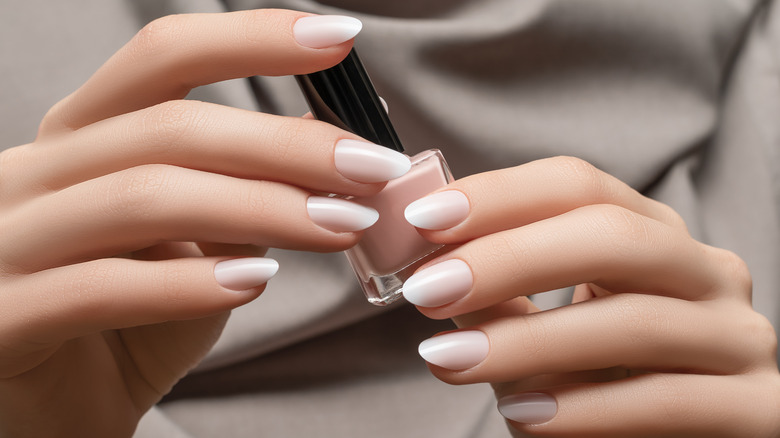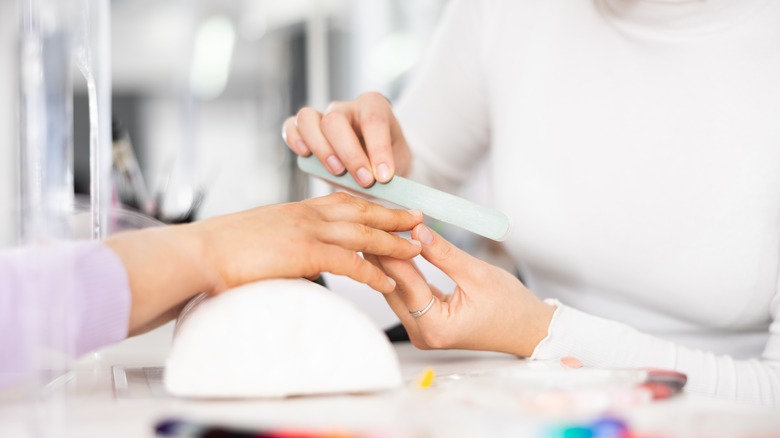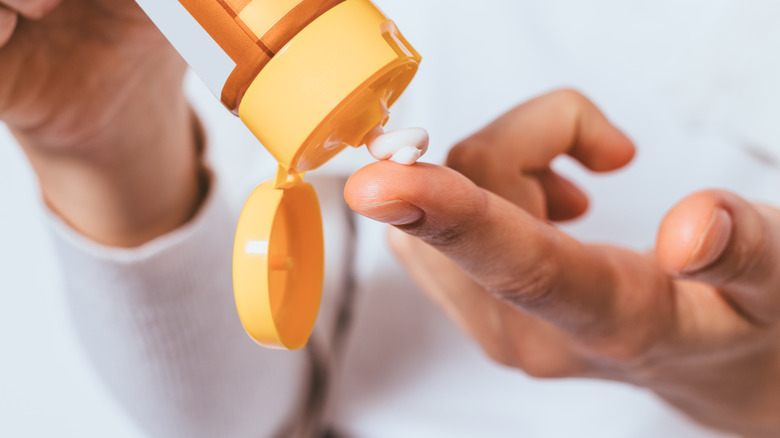Is It Safe To Get A Gel Manicure With Nail Psoriasis?
If you like to frequent the nail salon, you know how fun it is to switch up your nails constantly. From long aura nails one week to short French tips the next, each manicure can complement whatever aesthetic you have going on. On the other hand, consistent manicures can come with their own share of problems. Without taking breaks in between your artificial nails or gel manicures, you run the risk of brittle nails that get dry and can potentially crack.
Taking a one-week break every few gel manicures will prevent your nails from becoming dry and fragile. If your nails are damaged from acrylics, the wait is even longer. Clutch Nails recommends taking about three to six months off in order for your nails to get healthy. While the wait isn't that much to sacrifice for a manicure, people with nail psoriasis may not be able to get gel or artificial nails at all. An autoimmune disease, nail psoriasis changes how your nails look, causing discoloration and buildup under the nail.
Can you get gel manicures with nail psoriasis?
With nail psoriasis, an autoimmune disease, the immune system views the nail tissues as detrimental to the body, attacking them from the inside out. As a result, the nails become inflamed, causing them to grow thicker or look disfigured. Nail psoriasis can take on multiple appearances, from having a brownish tint and pitting to taking on a white and yellow look with tiny red or white dots underneath.
The debris that can grow under the nail tends to be painful, with the nails often separating from the nail bed itself. Without proper treatment, nails can go on to become a source of pain and discomfort. Brittleness is a common symptom of nail psoriasis, which may lead to splitting nails. If you have this condition, it's best to avoid manicures like gel or acrylic nails that can result in further damage to the nail.
However, this doesn't mean that you have to forego manicures altogether. Using a nail file to buff the nails gently or painting over the nail with polish is completely safe. It also can help to hide any discoloration or textural issues on the nail.
How to treat and care for nail psoriasis
When it comes to dealing with nail psoriasis, although there is no cure, there are treatments that can make living with it more bearable. Prescription ointments and over-the-counter creams can help with milder cases of the disease. Although these treatments are effective, results may take about 4 to 12 months to kick in. For more severe cases, corticosteroid injections may be required.
To manage symptoms, keeping your nails short will lower the chances of the nails lifting or from buildup developing under the nail bed. Wearing gloves when working around the house can help from further irritation. If your nails have thickened, soaking them in warm water for a few minutes before filing them can make the task easier. Constant moisturization with thick, rich creams will also benefit the dryness of the cuticles and hands. If your psoriasis is causing your nails to lift, be gentle when cleaning the debris out underneath them.


